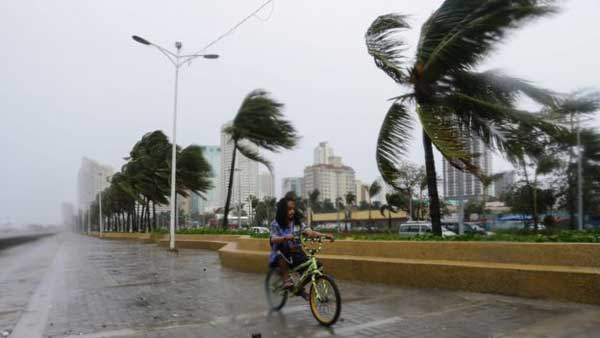
Manila, Philippines (BBN)-Homes have been flattened, power lines toppled, and thousands of people have fled their homes as Typhoon Koppu swept into the northern Philippines.
Disaster agency officials said the storm was also whipping up coastal surges 4m (12ft) high, reports BBC.
The huge, slow-moving typhoon made landfall near the town of Casiguran on the island of Luzon on Sunday morning.
Koppu is predicted to bring three days of torrential rain, triggering major flooding and possibly landslides.
Alexander Pama, head of the government's main disaster agency, said 10,000 people had been displaced in north-eastern Luzon but no casualties had been reported so far.
"Initially, we are getting [reports that] many houses were destroyed, power lines toppled and trees blocking major roads," he said.
The eye of the storm was moving west at a speed of just 3km/h (2mph).
"It has slowed almost to a crawl. We were hoping it would speed up and spare us sooner," Mr Pama added.
Flights and ferry services in the north have been cancelled and some bus services in mountain areas suspended due to the threat of landslides.
On Friday, President Benigno Aquino made a televised warning, the first time he had done so since Super Typhoon Haiyan in 2013, which killed more than 6,300 people.
BBC science editor David Shukman, who is in the capital Manila, says public warning systems have been greatly improved since Typhoon Haiyan, so there is a much better chance of keeping people safe.
Typhoon Koppu, also known as Lando, is up to 650 km across and producing winds of up to 250km/h (155mph). It is slow moving, meaning it could bring intense rain over a long period of time.
Speaking in Manila, Lotta Sylwander of Unicef told the BBC that people in the worst hit areas needed to be able to sustain themselves for up to 72 hours.
"That's how long the typhoon is going to take to pass and during that time it's going to be extremely difficult to come in with any kind of transport," she said.
"We're hoping that people really did prepare and have enough food and water at home."
"Soldiers with bull horns were going around coastal villages forcing people to flee," Vir Malabanan, a resident told Reuters by phone from Santiago, in Isabela province.
"We've been experiencing heavy rain and strong winds for hours. We no longer have power in the province, so we rely on radio sets for news."
Rain has also reached the capital Manila, though winds are not expected to be strong enough there to cause damage.
In his televised appeal on Friday, President Aquino urged the estimated six million people in the typhoon's direct path to listen to government warnings and be ready to evacuate their homes if necessary.
He said aid agencies had already distributed emergency supplies to evacuation centres.
"Your government is here to help us achieve zero casualties," Aquino said.
Meanwhile, the Philippine military in northern Luzon has been placed on alert for disaster operations.
Typhoon Koppu is not due to leave the Philippines until Tuesday, when it will be heading towards Taiwan.
BBN/SK/AD